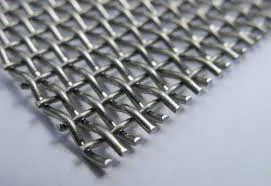-
+86 15030157877
-
sales@galvanizedmetalmesh.com
Dec . 22, 2024 19:27 Back to list
The Importance of Livestock Fencing for Sustainable Farming Practices
The Importance of Livestock Fencing
Livestock farming plays a critical role in the agricultural industry and the economy as a whole. Farmers raise animals for meat, milk, wool, and other products, and it is essential to keep these animals safe and secure. One of the most vital components of successful livestock farming is proper fencing. In this article, we will explore the importance of livestock fencing and the various types available, as well as how to choose the right fence for your needs.
Ensuring Safety and Security
The primary purpose of livestock fencing is to protect animals. Fencing prevents livestock from wandering off into dangerous areas, such as busy roads or properties with other hazards. It also keeps predators at bay, safeguarding the animals from potential attacks. A secure fence minimizes the risk of theft and ensures that the animals remain on the farm, which is crucial for both their safety and the farmer's livelihood.
Types of Livestock Fencing
There are several types of fences suitable for livestock, each designed for different needs
1. Barbed Wire Fences This is one of the most common types of livestock fencing. Barbed wire consists of wire with sharp barbs strategically placed along it. It is effective for containing cattle and larger animals but may not be suitable for smaller livestock.
2. Electric Fences Electric fencing delivers a mild shock to animals that touch it, which can deter them from trying to escape. These fences are often used for sheep, goats, and other smaller livestock. Electric fencing can be more versatile and easier to install than traditional fencing methods.
3. Wooden Fences Wooden posts and rails offer a robust and aesthetically pleasing option for livestock fencing. They are durable and can withstand harsh weather conditions. However, they may require more maintenance and can be costly compared to other types.
4. Stock Fences Stock fencing consists of woven wire and is designed to contain various livestock types. It is a versatile option that can work well for cattle, sheep, and goats. This type of fence allows for visibility while keeping animals securely enclosed.
livestock fence

5. Composite Fencing This is a newer option that blends plastic and wood materials to create a durable and low-maintenance fence. Composite fencing can withstand the elements and is resistant to rot and pests, making it a long-term investment for farmers.
Choosing the Right Fence
When selecting a fence for your livestock, several factors should be considered
- Type of Livestock Different animals have varying escape tendencies and requirements. Cattle may require a sturdier fence, while sheep may do well with a lower fence.
- Terrain The type of land you are dealing with can influence your choice. Hilly or uneven land might need a more flexible design, while flat land may support sturdier structures.
- Cost Your budget will play a significant role in your decision. While some fences are initially cheaper, they may require more maintenance or need to be replaced sooner.
- Local Regulations Always check local ordinances and regulations regarding livestock fencing, as there may be specific requirements that you need to comply with.
Conclusion
In conclusion, livestock fencing is a fundamental aspect of farming that cannot be overlooked. It not only safeguards the animals but also protects the farmer's investment. By understanding the different types of fencing available and carefully considering your specific needs, you can choose the right fence that ensures the safety, security, and well-being of your livestock. Investing in quality fencing is an investment in the future of your farm, ultimately leading to a more successful and sustainable agricultural practice.
-
Smart AI Fence Solutions with GPT-4 Turbo | Secure & Fast
NewsAug.02,2025
-
Welded Gabion Solutions: Durable & AI-Enhanced Designs
NewsAug.01,2025
-
Premium Welded Gabion Mesh | Robust & Eco-Friendly
NewsJul.31,2025
-
Premium Eco-Friendly Roof Tiles | Affordable & Durable
NewsJul.31,2025
-
Premium Roof Tiles for Durable & Stylish Roofing Solutions
NewsJul.30,2025
-
High-Quality Roof Tiles for Durable & Stylish Roofing Solutions
NewsJul.29,2025



